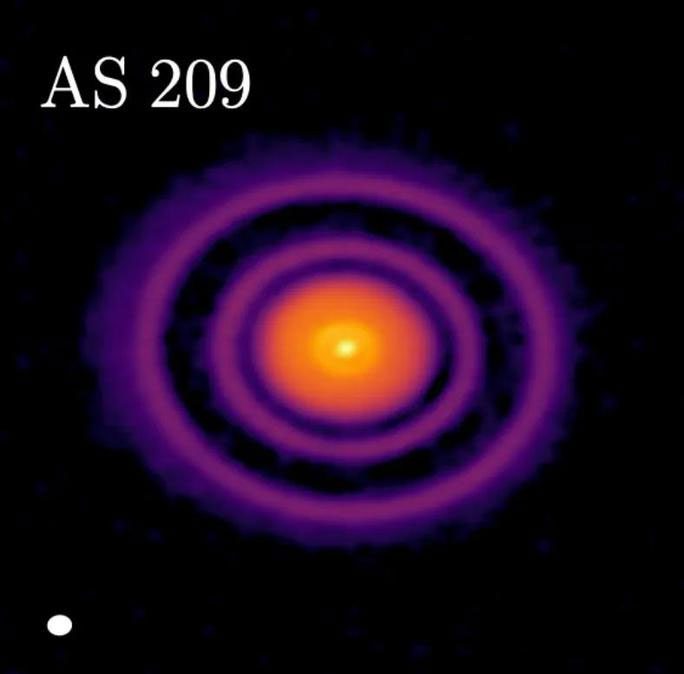The ALMA (Atacama Large Millimeter/submillimeter Array) astronomical observation system has made an extraordinary discovery: a true infant planet within the protoplanetary disk of the young star AS 209.
ALMA is a powerful astronomical observation system located in the Atacama Desert of Chile. A team of scientists from the University of Florida, USA, utilized the crystal-clear data it collected to uncover a new world approximately 395 light-years away from us.

The star with its intact protoplanetary disk – the purple gas and dust rings – AS 209 – (Photo: ALMA)
According to SciTech Daily, directed towards the Serpens constellation, ALMA captured a mysterious bright spot emitting light in the empty space surrounding the star. Upon closer examination of this bright spot, scientists concluded that it must be a planet.
The parent star AS 209 is only 1.6 million years old, just at the beginning stage of being able to form planets. Therefore, this mysterious planet could be the youngest planet ever discovered in the Milky Way galaxy, which contains Earth.
The new planet is so young that it is not yet a fully formed planet, but rather a primordial structure just emerging in the protoplanetary disk of its parent star. The parent star AS 209 is also one of the rare stars ever discovered still in the protoplanetary disk phase, and it is the youngest among them.
In other words, this spectacular moment has provided a “time window” for astronomers to explore how a young star system begins to form its planets, much like our Solar System billions of years ago.
It will also provide “once-in-a-millennium” data on how a planet—like the world we live in—came into existence.
“The best way to study planet formation is to observe planets as they are forming,” concluded Professor Jaehan Bae, the lead author of the study.
The research was recently published in the scientific journal The Astrophysical Journal Letters.





















































